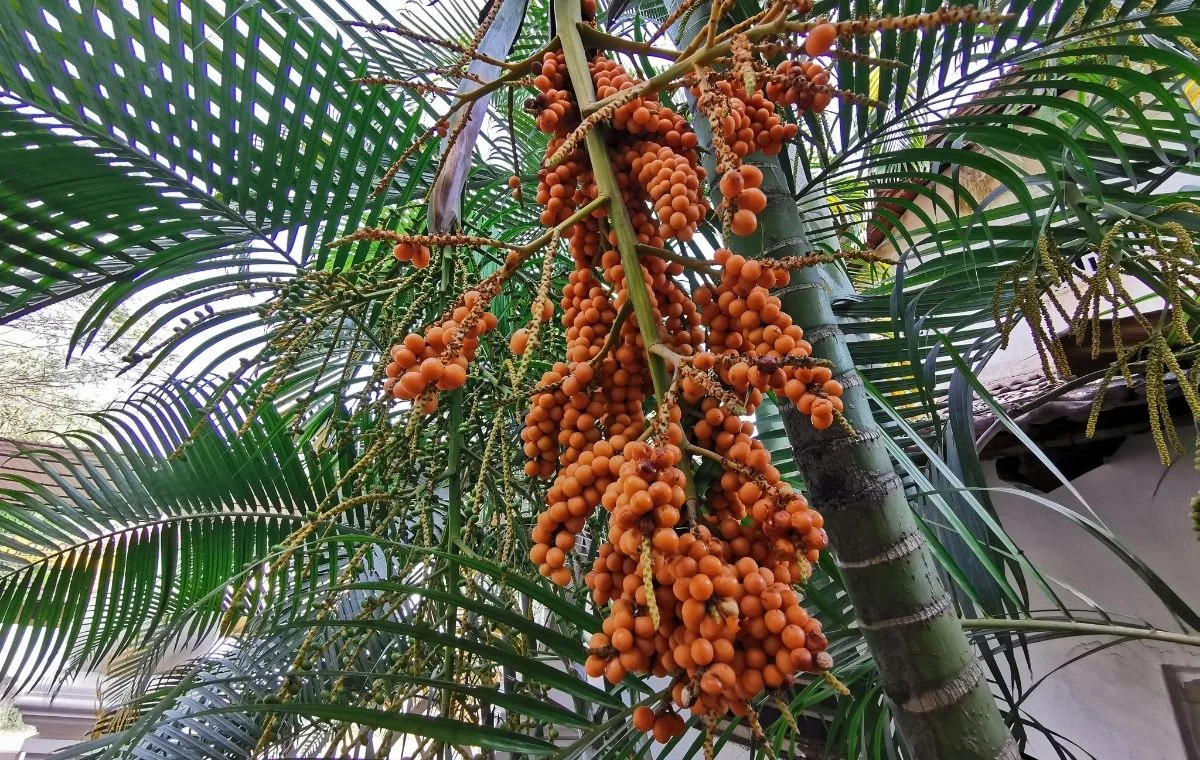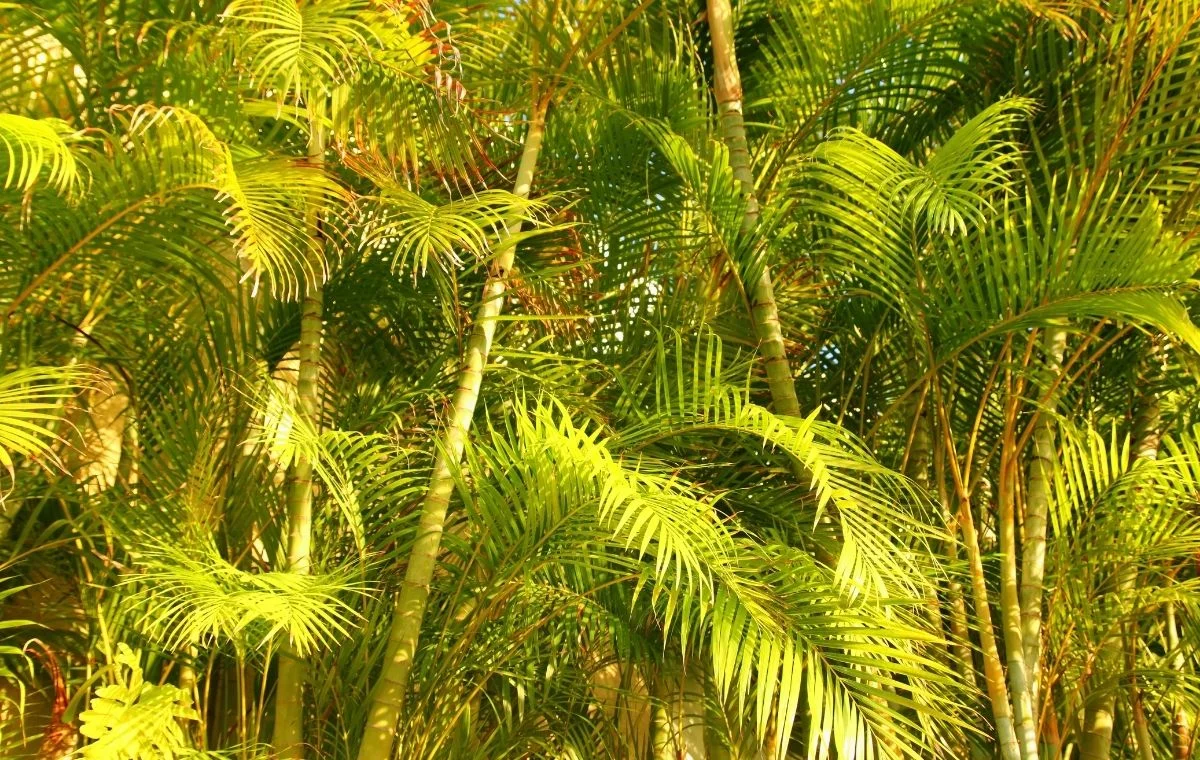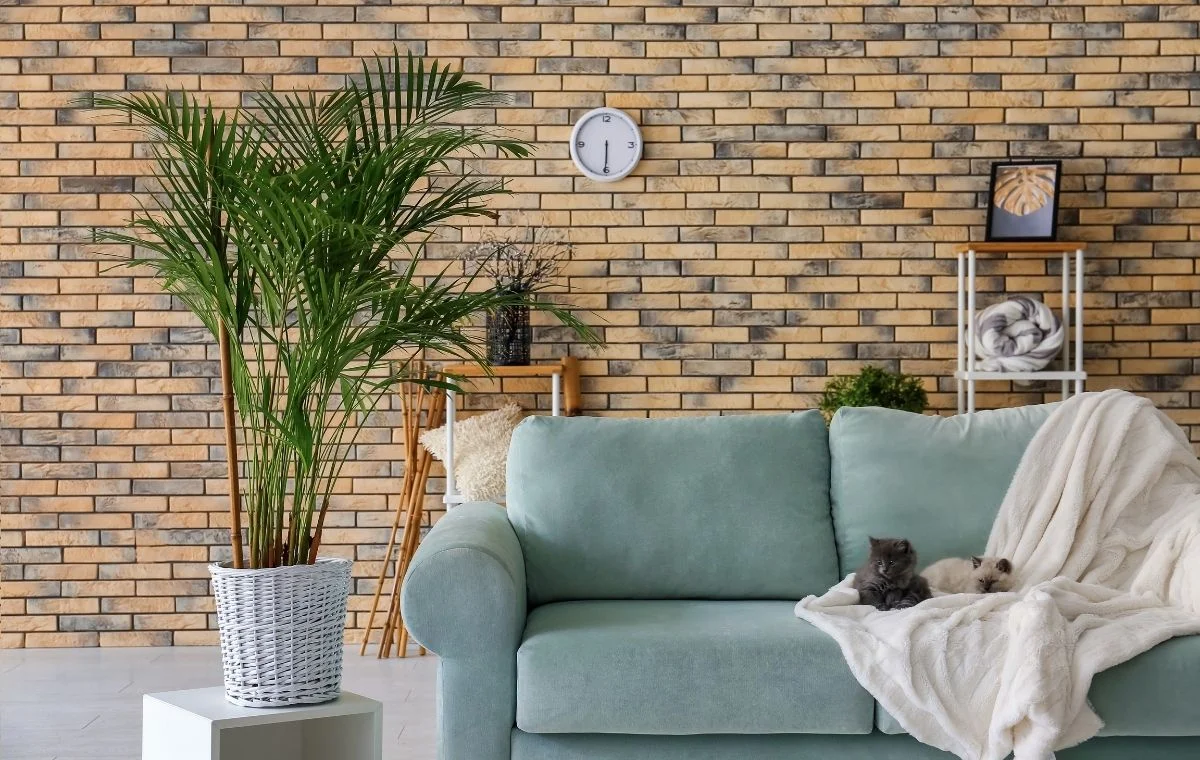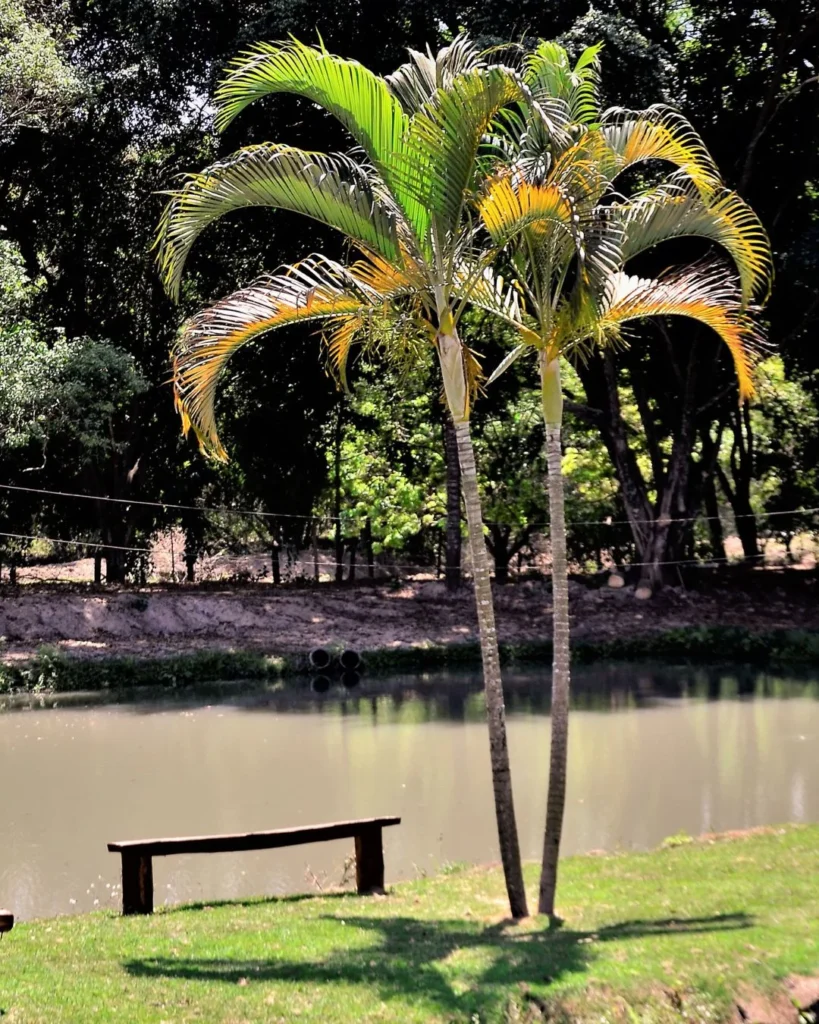The areca palm (Dypsis lutescens) is one of the most popular palm trees in the world, both in gardens and interior decoration. It originates from the humid and shaded tropical forests of Madagascar, where it thrives in its natural habitat under the canopy of trees, explaining its preference for diffuse light and partial shade. Adapted to warm and humid climates, this species has spread globally, becoming a favorite in tropical and subtropical gardens due to its tropical beauty and adaptability.
The origin of the generic name Dypsis is uncertain, but it is believed to be related to Greek words like ‘dypto,’ which means ‘I dive,’ or ‘dyptes,’ which means ‘diver,’ suggesting the plant’s affinity for moist environments or its ability to ‘dive’ in search of moisture. The specific epithet ‘lutescens‘ comes from Latin, meaning ‘turning yellow,’ referring to the characteristic yellowish color of its stems and leaves, especially under intense sunlight.
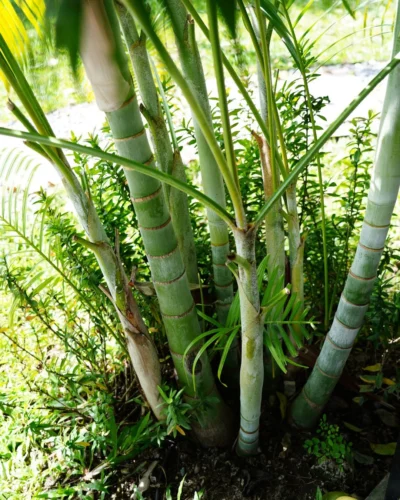
The areca palm stands out for its multiple stems, which form dense and elegant clusters. These stems, the plant’s trunks, are ringed and display a color that varies from greenish-white to yellowish, giving the plant a unique appearance. The leaves of Dypsis lutescens are large and intensely green and shiny, with a recurved arrangement. Each leaf consists of 20 to 50 pairs of narrow, elongated leaflets.
The petioles and rachises, which support the leaflets, have a yellowish hue, creating an attractive contrast with the green leaves. The areca palm also stands out for its branched inflorescences, in the form of panicles, carrying numerous small white-cream-colored flowers that are subtly fragrant. The fruits, which develop after flowering, start with a greenish-yellow color and mature into a purplish hue.
Compared to other palms, the bamboo palm exhibits rapid growth. It can be grown in two forms: shrubby (with many stems – reaches up to 10 feet – 3m) or treelike (with a few stems – reaches up to 30 feet – 9m). The shrubby form is natural, meaning no management is required for the plant to form clumps. The treelike form is achieved by pruning the excess stems at the base. This pruning should be done continuously whenever new shoots appear so that the selected stems gain vigor and stand out. Never prune with the aim of reducing the palm’s height. Keep in mind that if the heart of the stem is cut, no new leaves will sprout at its top, and that stem will die.
This palm is even more versatile than one might imagine, as it can be widely used in tropical landscaping, whether as a standalone plant, in hedges, groups, or even potted in patios and indoor spaces. Although it tolerates full sun and thrives in such conditions, it can develop yellowing leaves with burnt tips. Its leaves appear more vibrant and beautiful in partial shade or diffuse light. Potted plants that remain indoors for extended periods should be given a rest period in semi-shaded outdoor environments to regain their vigor.
In Feng Shui, the areca palm is valued for its ability to bring positive energy (Chi) to spaces, balancing the energy of the surroundings and promoting well-being. Its presence at home or in the office is seen as a symbol of growth, prosperity, and success, making it an auspicious choice for gifts on occasions like new space inaugurations. It is also recognized for its remarkable air-purifying abilities. NASA studies highlight its efficient absorption of common indoor pollutants such as xylene and toluene, contributing significantly to cleaner and healthier indoor air.
It should be grown in full sun, partial shade, or under diffused light in fertile, well-draining soil enriched with organic matter and regularly irrigated. Despite being a tropical plant, it is quite cold-resistant, withstanding temperatures as low as 28°F (-2°C) for short periods. It appreciates high humidity, so it should not be used in air-conditioned environments. In case of insufficient humidity, the plant may develop leaf tip burn.
Areca palms tolerate transplanting very well, with younger plants adapting better. Keep in mind that this palm is quite thirsty and will require frequent watering, especially in the first year after planting. Once it is well-established in the garden, provide supplementary irrigation during dry or hot periods.
Monthly fertilization is limited to spring, summer, and fall. Fertilize with palm-specific fertilizers and always add a portion of organic compost to improve soil or substrate conditions. Potted palms should be replanted every two years to refresh the substrate and adjust the pot size to remain proportional to the plant. During this time, you can also obtain new seedlings.
Propagation can be done by seeds or by dividing rooted clumps. Seeds, once collected from ripe fruits, should be cleaned and sown in fertile, well-draining substrate. It is important to keep the substrate constantly moist but not waterlogged to facilitate germination. Germination typically occurs between 2 to 6 months, depending on growing conditions such as temperature and humidity. Once germinated, the seedlings can be transplanted into individual pots, where they should be cared for until they reach a suitable size for permanent planting.
Propagation by dividing clumps is done by carefully removing a portion of the mother clump, ensuring that the removed portion has healthy roots. This technique is ideal for quickly multiplying the plant, especially in landscaping projects where an immediate effect with the presence of several palms is desired. However, it is worth noting that it is easier to separate clumps from young plants with still green and thin stems than from mature plants.
